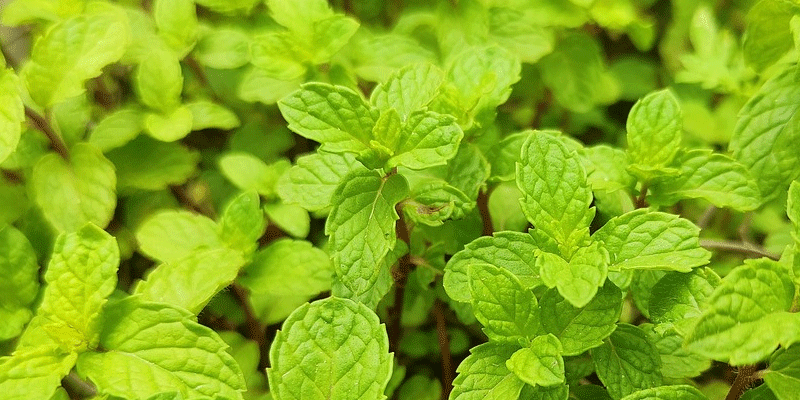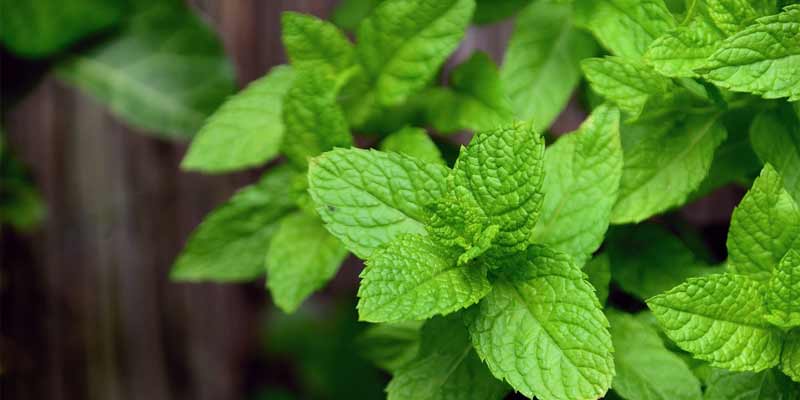With its invigorating aroma and refreshing taste, mint charms gardeners and chefs worldwide. Whether peppermint, spearmint, or any of the numerous varieties that grace your garden; capturing their peak flavor, aroma, and medicinal properties hinges on harvesting at precisely the right time.
This article investigates indicators—alongside best practices—for discerning when to harvest mint, an endeavor that guarantees a plentiful supply of fresh aromatic leaves for culinary delights, beverages, and even herbal remedies!
Understanding the Harvesting Process:
In the process of harvesting mint, one must meticulously choose mature leaves; simultaneously, it is crucial to maintain the plant’s vitality and regenerative capacity.
With their essential oils and compounds, mint leaves offer a distinct flavor and aroma: thus, timing becomes an integral factor in harnessing maximum potency for culinary appeal.
3 Factors Affecting the Timing of Mint Harvest
1. Plant Variety
Varying growth rates and flavor profiles in different varieties of mint may influence the timing of harvest. For instance, peppermint often boasts a robust menthol flavor compared to the milder, sweeter taste found in spearmint.
Your harvesting decisions can be guided by your understanding of the characteristics specific to the variety you are growing.
2. Growing Conditions
Temperature, sunlight exposure, soil moisture, and nutrient levels can influence the growth and development of mint plants. Indeed, healthy and well-nourished ones are more likely to yield flavorful leaves suitable for harvest.
By monitoring these environmental factors, you can ascertain optimal conditions, specifically the timing for mint harvesting.
3. Stage of Growth
From seedling to maturity, mint plants undergo diverse growth stages. Throughout the growing season, you can harvest mint leaves; however, the timing might differ if you pluck individual leaves or whole stems.
By comprehending the growth patterns of mint plants, anticipating optimal harvest time for maximum flavor and yield becomes feasible for you.
Indicators for Harvesting Mint
1. Leaf Size and Color
Typically, mature mint leaves exhibit a vibrant green color and attain a larger size compared to their younger counterparts; they may also be darker in hue.
Therefore, to ensure optimal flavor and aroma: scrutinize for these indicators of maturity when harvesting your mint. Should you come across leaves that appear pale, yellowed, or damaged during this process, exercise caution as such specimens could lack both flavor and nutritional value.
2. Aroma Intensity
As mint leaves mature, their essential oils become more concentrated, intensifying the aroma. Assess this by gently crushing a leaf between your fingers and inhaling deeply, you should experience an increased scent.
The mint variety you are growing should release a strong, fragrant scent that is characteristic of mature leaves.
3. Leaf Texture and Firmness
Compared to younger leaves, mature mint leaves possess a firm and crisp texture that exhibits less wilting tendencies. It is prudent not to harvest wilted or limp foliage, as such may have initiated flavor and moisture content loss.
Opt for robustly resilient leaves when making your selection; they should feel invigoratingly sturdy under the touch.
4. Flowering Stage
As mint plants mature, they signal the end of their vegetative growth phase by producing flowers. The flowering mint remains edible; however, resource allocation towards seed production may cause a bitter and less flavorful taste in its leaves.
To capture the best flavor and aroma, harvest mint leaves before the plant enters its flowering stage.
Best Practices for Harvesting Mint
Use Clean, Sharp Shears
Use clean, sharp gardening shears or scissors to harvest mint; this minimizes plant damage and guarantees clean cuts. Ensure you neither tear nor bruise the leaves such actions could compromise their quality and shelf life.
Harvest Early in the Day
In the early hours of the day, when essential oils are at their highest concentration and temperatures remain cooler, which is when you should harvest your mint leaves. By adhering to this practice, preserving not only flavor but also aroma while minimizing wilting as well as moisture loss; a successful harvest becomes more achievable.
Selective Harvesting
Opt for selective harvesting instead of reaping whole stems, choose to pluck individual leaves or leaf clusters. This choice enables the plant’s continuous production of fresh growth, a crucial factor in maintaining its overall health and vitality.
Regular Harvesting
Regularly harvest mint leaves throughout the growing season. This practice not only encourages continuous growth but also prevents overgrowth or legginess. Be cautious of elongated intervals between each harvest; as time progresses, older leaves may acquire a tough and bitter taste.
Prune Sparingly
Regularly harvesting mint is crucial; however, excessive pruning must be avoided as this can stress the plant and impede its growth. Prioritize the removal of mature leaves and stems: allow emerging new growth from within the center of your plant to flourish.
Conclusion
Capturing mint’s peak flavor, aroma, and nutritional benefits requires essential knowledge in harvesting timing. Gardeners can guarantee their mint leaves are flavorful and aromatic, ready for culinary use by heeding indicators such as leaf size, color, intensity of aroma, and growth stage.
Mastering proper techniques—along with precise timing—for harvest yields a bountiful supply of fresh mint leaves, an essential addition to teas, cocktails, salads desserts, or herbal remedies – that infuses your favorite dishes with a burst of freshness and rejuvenates beverages.


Leave a Reply